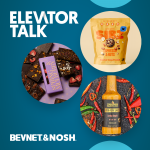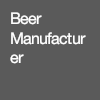Former WFM Co-CEO: HeatGenie Makes Customer ‘Center of World’

What if there was a technology that could not only offer consumers more choices in their consumption habits, but also open up more merchandising options in store and even quite possibly change the world?
In bringing on an experienced team of industry experts as advisors and, in some cases, investors, technology company HeatGenie — which produces small heaters that can be used to warm food or beverage products — is betting that they’ve found just that.
That group now includes former Whole Foods Market Co-CEO Walter Robb, who joined HeatGenie as an investor and will join the company’s Board of Directors. Brian Goldberg, chief strategy officer and EVP of corporate development at Amplify Snack Brands, Jason Buechel, EVP and CIO at Whole Foods Market, Danny Stepper, co-founder and and CEO of L.A. Libations and James Tonkin, founder and president of HealthyBrandBuilders, have all joined HeatGenie’s board of advisors.
“Since stepping down [as Whole Foods co-CEO], I’ve been looking at a lot of different opportunities that have come my way and I chose this one as one I thought had a lot of potential to make a big difference,” Robb told NOSH. “This country is all about allowing this sort of thing to happen and allowing it to happen in markets that ultimately cast their vote and say this something the customer wants.”
HeatGenie was founded in 2009 by Brendan Coffey, an engineer with a background in battery technology. In 2015 the company added CPG exec Mark Turner as President and CEO and since then has raised roughly $4.5 million in funding, according to SEC forms.
The newest additions to the HeatGenie team are part of Turner’s strategy to keep overhead low while still bringing in top talent.
“We are a small company and because we are a licensing company, we’ll stay a small company. So to build out my team, I looked for the best people in the industry who would be emotionally involved and helpful and be able to use their experiences, resources and networks to help us accelerate our success and that’s what I got,” Turner said. “These are not passive players by any means.”
While the idea of a self-heating can or bowl isn’t new, Robb and other advisors were attracted to HeatGenie because of how its technology works.
Self-heating cans were initially brought to market over a decade ago. These early ventures used a process known as quicklime, in which water mixes with calcium oxide to create an exothermic reaction and heat products. However, the cans were only briefly on the market due to major engineering flaws which sometimes resulted in exploding products. The technology was also bulky, displacing liquid for its heater, and only worked in certain packaging formats.
HeatGenie, in contrast, uses what is known as a “solid state heater” in which the heating mechanism is fully contained. In the company’s current prototype, the heater is activated by turning a lid, resulting in aluminum and silica to mix in a solid casing and release heat. The entire heater is roughly the size of a AA battery and only displaces roughly one tenth of a product’s volume. The heater also currently works with any can that takes a standard 202 lid, offering producers the option to work with a variety of packaging shapes and sizes.
As for safety, Turner said there have been numerous tests to assure that regardless of what stress the can is put under — including punctures, a lack of food or beverage around the heater or flame — the battery resorts to its fail safe and turns off.
Unlike with the older technology, any product using HeatGenie can be disposed of in the normal stream of recycling.
“I look at this is innovation and an exciting one that will bring new opportunities for the customer in many different categories,” Buechel said to NOSH. “There’s going to be a whole new set of offerings and opportunities that customers are going to have with that.”
Along with expanding to more categories, HeatGenie will also offer different temperature settings. Currently, HeatGenie can heat food or beverages to as as low as 120 degrees fahrenheit or as high as 170 degrees fahrenheit. But future iterations may need to be cooler to work with products such as baby formula. Regardless of desired temperature, Stepper said consumers will love interacting with the product.
“It’s just cool to see it heat up. It’s an amazing experience. It’s just that, an experience. And it’s something you just want to show your friends.” Stepper told NOSH. “But, it’s not a novelty because it’s real and it serves a real consumer need.
That consumer need, said Robb, is the desire to have a product when you want it, at the temperature you want it — whether that’s chilled, room temperature or hot. With HeatGenie, one product can meet any one of those temperature states.
“What I think is happening with business in general, is that we’re seeing an evolution towards serving the customer in new ways and different ways,” Robb told NOSH. “And this would be a small example of that larger trend of seeing a new world order where the customer is really at the center of the world. It’s really supported by growth in technology, growth in data, growth in choices. This represents one of those such choices, which is to say, the customer is now able to have a fresh beverage and change the temperature in less than two minutes.”
Turner noted that HeatGenie has been particularly well received by millennial consumers who want a choice with their food and beverage, are open to innovation and are willing to spend more to get what they want. They also, Turner said, are curious and, if impressed, will quickly share a new product or technology with friends through their social channels.
While American consumers may find canned hot beverages and soups to be novel, the trend has been popular abroad for decades. In some Asian countries, for example, it’s not uncommon to see heated vending machines or oven-like glass boxes that keep beverages warm. But none of these solutions offer on-demand heating.
For Stepper, the ability to sell a such a product also opens up new retail merchandising options in the U.S. For years there has been a struggle between how much space retailers can allocate to coolers and the amount of producers who want access to that shelf placement.
“What I love about this, what’s really fascinating to me, is that I spend my life trying to make sure that beverages are cold at retail, because the old adage ‘if it’s cold it’s sold,’” Stepper told NOSH. “But with this, I don’t want to be in the [cooler]. So it just opens up this world of space options and merchandising options that really turn things on it’s head.”
For Robb, however, the opportunities go beyond retail and into humanitarian situations. Citing recent hurricanes that have resulted in massive infrastructure damage and power outages, Robb noted to NOSH that HeatGenie could one day help provide quick and easy hot meals to those in need.
“You can imagine all sorts of very humanitarian uses for this in a way that’s beyond we just have to give the consumer the next thing… I think innovation can start out where a company grows into a larger purpose,” Robb said. “How do we keep broadening our mission? How do we keep broadening what we can do to make a better world?… I think for any company today that’s going to be resting with customers, they need to have something more than just the can. They need to have more of a conscious. They need to have a contribution.”












